Angkor Wheeling
The alarm went off not long after sunrise and we made our way excitedly to the downstairs of the Mandalay Inn. The staff was again supremely friendly to us, hustling to remove the cycles from the room where they had stored them overnight. They spent the night right next to a full-sized cycle that the staff were just bubbling to inform us belonged to another American who was cycling here as well. Interesting, we thought, and ordered breakfast.
We don’t generally order breakfast at the hotel unless it’s included with the room. But we were in a rush to get to Angkor Wat to maximize our wheeling there. Plus they were so darned friendly here, we found ourselves tempted to support the venture. The breakfast was unfortunately only successful in the support-the-venture department, as it turned out to be expensive (by Cambodian standards) and consisted of a fried egg into which had been pushed four “Lit’l Smokies®.” (For the uninitiated, I’ll have to refer you to GOMEAT.com).

Toast was limp and depressed. Coffee was flavored with some hazelnut-type chemical, and was monstrously sweet.
Perhaps some of my complaint over the breakfast comes more from internal strife. My stomach had not been up to its usual hearty patterns of behavior, and hunger and passion for food eluded me. I had little interest in food, but scarfed this mediocre meal down knowing we had a big wheel ahead of us. Somewhat under-caffeinated, and oscillating between flourishing excitement for the day’s wheel and waves of nausea, I joined Scott on the road.
Signs for Angkor were everywhere, and the wheel took us at first along a large canal that wound its way through the city of Siem Reap. We wheeled by the place where we had enjoyed the Crazy Beef Burger the night before, and followed the signs until we were dumped onto the huge central road that leads to the Angkor temple complex. Angkor is one of the most visited tourist destinations in the world, with approximately 700,000 visitors a year. The huge road was justified, but still not all that fun to wheel. The shops that lined the street were overpriced, and we had zero luck finding a decently priced cup of coffee. When we saw an opportunity to take a break from this road, by wheeling the “Angkor Herb Gardens,” we called a lichtenschtein. The herb gardens were strange, and none too full of herbs. And before we knew it, we were simply riding up a one-way street the wrong way through thick jungle. This kind of maneuver, known in the AsiaWheeling community as the “subversive garade” is commonly accepted in Cambodia, especially if the perpetrator is a motorcycle or bicycle. So we had no fear even when passing police officers headed the other way.
I checked our bearings on my compass-bell and we appeared to be following the main road, more or less, just a kilometer or so to the east. So where were we? This was no herb garden… in fact it was such dense jungle that the amount of traffic on the road seemed unjustified. Then suddenly we came around the corner and found ourselves looking out on a giant rectangular lake, with an old stone wall around it. I was still wrapping my mind around what exactly was looming out of the center of that giant moated structure, when we were promptly stopped by a police woman. “Tickets?” she asked.
It was then that we realized we had found our way somehow onto a maintenance access road of some kind, and this was the Angkor complex. We’d made it. And as long as we were not about to be arrested for trespassing or sneaking in without paying, it looked pretty cool. Scott was able to convince the woman that she had merely caught us in an honest mistake. We asked where we might buy tickets, and she motioned the way down the road. Angkor exists on a scale that is rarely encountered by humans. The temples are large and spread out, and a fine grid of newly paved roads connects them all. You could say it’s one of the most readily wheelable tourist attractions on earth.
The ticket counter was a few kilometers away, and on the ride we stopped to buy some coffee. The roads around the main temple, called Angkor Wat, are lined with stand after identical stand, selling basic Cambodian fare: lettuce wraps, fresh fruit, French bread sandwiches, grilled meats, potato and carrot soup. We struck out with the first few stops, finding no coffee, but third time hit gold. Unfortunately, it seems we were the only people to order coffee from this stand – perhaps ever. We tried to communicate that we were in a bit of a rush, because of our illegal status in the area. In response, I believe, the woman took dirty water, half boiled it, dissolved instant coffee powder in it and served it to us.
It tasted like a Great Dane’s bathwater. My stomach, which was just starting to settle a bit, took a savage turn for the worse. It was only mildly improved by the time we reached the ticket office. We wheeled out of the park then swung around to re-enter legitimately. Having done that, we headed back to Angkor Wat.
We pulled up outside the temple and were quickly swarmed by children selling drinks, food, post cards, books, and the like. We refused most of them and haggled hard with one of them in order to still overpay a bit for a book detailing the history and relevant features of all the Angkor temples.
Once we had paid one of them, the rest of the kids caught the scent of blood and redoubled their assault. It was a new kind of sales maneuver, one we had not yet encountered. It was a clever combination of the guilt-trip and the persistence hunt. One of them was vehemently explaining to me that she was going to skip going to school that day so that she could wait for me to visit the temple then come out and perhaps buy a water from her. “Don’t skip school!” I said.
“Then buy some water so that I can afford to go to school.”
Sometimes AsiaWheeling is a tough business. Locking the bikes and extracting ourselves from this swarm was one of the tough parts. But we did it, and soon we were wandering into Angkor Wat.
Angkor Wat is an incredible piece of human ingenuity, a fascinating and haunting structure. It is just one of many temples in Angkor, and it is honestly best described using imagery. So without further adieu, let me give you a bit.
As we walked through the temple complex, in the peak of the hottest and driest season, we marveled at the scale and interconnectedness of the ancient Khmer civilization.  While Hindu at the time of building, Angkor Wat’s temples were later retrofitted with bas relief and sculpture to reflect the now Buddhist religion of the kingdom.  Our conversation turned to the history of empire, as we attempted to identify any large-scale civilizations that had not used religion as a principal tool in social and ideological hegemony.
The large Communist powers of the Mid-20th Century seem to have been the first state governments to invest heavily in scientific institutions for answering the questions of human curiosity, rather than rely on religion to play such a role.  We continued to rack our brains, placing other societies on a gradient of separability from religion. The Chinese dynasties held the mandate of heaven, while the Egyptians of 2500 BCE worshiped the Pharaoh as a god.  Medieval Europe intertwined church and state in an incredible force of social control, just as the Arab diaspora from their peninsula led them to use Islam as a tool of imperial organization and even urban design.
Finally, we reached feudal Japan, which seemed it might fit the bill, at least in a cursory analysis of Shintoism and feudal Japan on the WikiReader.

It was boiling hot out. I mean steaming, dripping hot. Scott and I were soaked. It seemed like we could not drink water fast enough. By the time we left the complex, we were all too happy to purchase water from the nagging hoard. This was, of course, not straightforward at all. And to simply pay the already over-priced fee of $1.00 for a bottle, I had to haggle vehemently for about 10 minutes.
With that experience under our belts, we decided to take a wheel. We headed away from Angkor Wat, and spotted a couple of cyclists darting off of a sandy side path. We decided to see where they were coming from, so we headed onto the same path. It turned out to be less of a cycling path and more of a sandy hiking trail that led around the giant Angkor Wat moat.
As we rode, we also found this was the spot of choice for a picnic on the lunch breaks of Angkor employees. They eyed us somewhat suspiciously, as we coaxed the Speed TRs over the sandy and treacherous path. All the lunching people around us began to spark a thought in Scott’s mind.
It was time for lunch. My stomach was still a mess, but eating is important. So we went to the only air-conditioned restaurant in the park, and I struggled valiantly to eat a few French fries while Scott worked hungrily at some Cambodian Anise-scented Pork and Egg Curry. For me the most pleasant part of the meal was the mint-scented cool towel they provided.
With eating thankfully out of the way, we poured our energy back into the wheel and the exploration of more temples.

Next on our list was Bayon.
Bayon is the central temple in a nearby sub-complex of temples called Angkor Thom.
We locked our bikes to a recently painted flag pole outside and headed in. This temple was much smaller than Angkor Wat, but was inviting and created intimate space in a way that Angkor had not.
This temple is famous mostly for the many faces on its surfaces. I enjoyed the dark and mysterious interior of the temple, which was filled with little stations where visitors could light incense and place it at the foot of one of the many images of Buddha.
As a result, the interior of Bayon was filled with a thick, scented smoke, which made for a most glorious effect when the sun cut it in thick yellow rays.
Back on the cycles, we made our way past a great many other temples, but since wheeling felt good, we kept going.
We did stop, however, when we passed Ta Prohm. Ta Prohm is perhaps better known to our American readers as the “Tomb Raider Temple,” as it was the temple used in this scene from that movie. It is one of the few temples in the Angkor complex that have been left more or less in its original state, still covered with strangler fig trees. Once again, perhaps the images will do a better job at describing it than I can with words.
This temple was perhaps the best yet. To explore it, Scott and I split up, making our ways through the many crumbling chambers, and doing our best to observe the many Chinese and Japanese tour groups from a distance.
It was getting late in the day, and we were still a little over 20 kilometers from town, so we decided to close this chapter of Angkor wheeling, and ride home. We had, however, purchased three-day passes to the Angkor complex. So there will be more where that came from.
Back at the hotel, we came up to the desk just as a woman was checking in. She asked about our Panama hats and Speed TRs, and through the conversation we discovered that she was the owner of the cycle that had been spending the night with our Speed TRs. She had been riding her bike in Malaysia and Thailand before this. She invited us to join her for dinner and we accepted. But first, a hearty round of showering. It had been quite a day, and we entertained each other over curries in the Khmer Kitchen with stories of wheeling and road-ready survival tactics.






























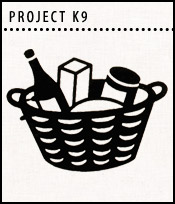
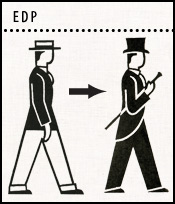
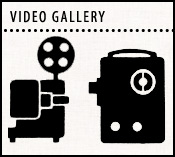
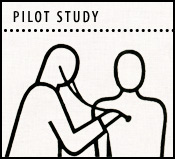
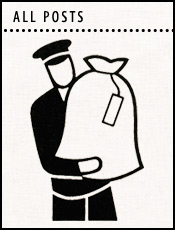
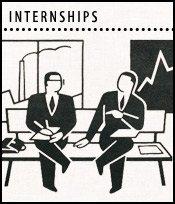




Comments
These pictures of Cambodia are by far the greatest pictures of your trip so far! Keep ’em coming. We all enjoy them so much!
Keep rolling and safe travels!
Big AsiaWheeling fan,
Mary Lucier Askins (SHP’83)
One of the best posts yet…incredible pictures.
Woody, I feel for you on the stomach problems, and may I advise that you steer clear of the “strange fruit smoothies” mentioned in the last post, or anything else that might contain tap water. When I was ten years old on a trip to Angkor Wat with my parents I drank a lychee smoothie and subsequently spent the next few days lying flat on my back battling psychedelic bouts of fever and staring at the ceiling fan. I would hate to see your wheel slowed by a similar experience.
wow, amazing yet again! the Anise-scented Pork and Egg Curry dish sounds delish (sorry woody!) and the temple with the fig tree, i had no idea it was a REAL temple, i just assumed it was the magic of hollywood. thanks for the vicarious trip through asia. you guys RAWK 🙂
Jake and Elwood at the temple, looking for a rubber biscuit.
Ta Prohm overtaken by the fig trees was indeed remarkable! It was hard to tell what looked more overheated, Woody, you or your hat.
@ Mark/Dad
I think the Christy’s Panama has a fair bit more stamina than I.